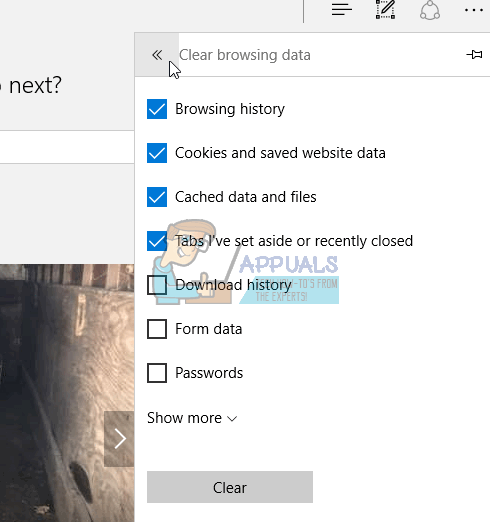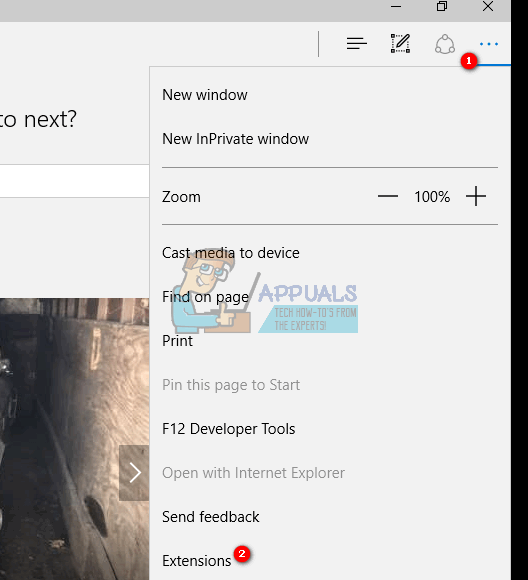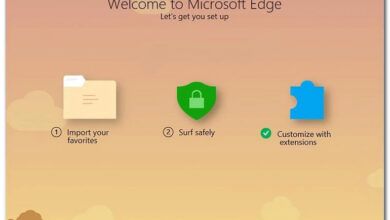Fix: Blank Screen or White Pages on Microsoft Edge
Windows 10 comes with a pre-built browser named Microsoft Edge that most of us already familiar with. Even though Microsoft has made a lot of improvements in Microsoft Edge but sometimes you might face the issue of “Blank Pages” in the browser as well. Basically whenever you open the browser you might see a completely blank page (white screen). Sometimes you might only be able to go around the blank page issue from the private browsing option. Sometimes the Blank Pages shows randomly on various websites like Facebook, blogs etc.
Just like there are many scenarios where you will be shown a blank page upon visiting a website, there are many reasons for this as well. Sometimes one of your extensions might be causing this issue. In some cases there might have been a corrupted History file that might be the reasons. In worst cases, all of this might be caused by a virus.
As there are many reasons for this to happen, we suggest you go through each method starting from method 1 and continue until your problem is solved.
Troubleshooting
The first thing to do is to clear the cache and cookies of the browser. Most of the time this solves your problem so try to clear the cache first and then start following the methods.
- Open Edge
- Press CTRL, SHIFT and DELETE keys simultaneously (CTRL + SHIFT + DELETE)
- Check Form data, Cached data and files and Cookies and saved websites data
- Select the option Everything from the drop down list in the section Time range to clear
- Click Clear

Method 1: Disabling Extensions
Disabling your extensions will help you figure out the issue. If disabling all the extensions solves this problem then that means one of your extensions were causing this issue. To check which one was the reason behind it, try to enable the extensions one by one.
- Open Edge
- Click the 3 dots on the top right corner
- Click Extensions
- Click the extension that you want to disable
- Click the switch under the name of the extension to turn it off
- Repeat this for all the extensions
Check if the issue is resolved or not.

Method 2: Disable Hardware Acceleration
Disabling Hardware Acceleration also solves the problem of blank pages so try to follow the given steps to disable it.
Microsoft Edge doesn’t have this settings directly accessible from the browser itself. So you need to disable it from the Windows
- Hold Windows key and press R
- Type inetcpl.cpl and press Enter
- Click Advanced Tab
- Check Use software rendering instead of GPU rendering
- Click Apply then ok
- Restart Edge

Method 3: Reset Microsoft Edge
- Run Microsoft Edge
- Open Task Manager by pressing ALT, CTRL and DELETE keys simultaneously (ALT + CTRL + DELETE).
- Right click on Microsoft Edge in the task manager and select Go to details

- Locate MicrosoftEdgeCP.exe(in the description it should say Microsoft Edge Content Process)
- Right click MicrosoftEdgeCP.exe and select End task

- Repeat the process for all MicrosoftEdgeCP.exe
If that doesn’t work then try the steps given below
- Hold Windows Key and press E
- Type C:\Users\[your profile name]\Packages\Microsoft.MicrosoftEdge_8wekyb3d8bbwe in the address bar (the white box located on the top mid) and press Enter
- Delete everything in this folder. To do that, Hold CTRL and press A (CTRL + A). Now right click on one of the files and select delete. Press ok if it asks for permission
- Now press Windows key once and type Windows PowerShell in the search box
- Right click on the Windows PowerShell and select run as administrator
- Now copy-paste the command given below and press Enter
Get-AppXPackage -AllUsers -Name Microsoft.MicrosoftEdge | Foreach {Add-AppxPackage -DisableDevelopmentMode -Register “$($_.InstallLocation)\AppXManifest.xml” –Verbose}
Once you are done. Run the Microsoft Edge again and check if the issue persists.
Method 4: Renaming files
- Hold Windows key and press E
- Type C:\Windows\Prefetch in your address bar (the white box located on the top mid) and press Enter
- Now locate the files named EXE–xxxxxxxx.pf (where xxxxxxxx stands for a random number like 536C4DDE)
- Right click these files (there maybe more than one) and rename these to anything you want. To rename the files, right click on the file and select Rename. Now type whatever you want and press Enter.
Now relaunch the Microsoft Edge and it should solve the problem.
Method 5: Deleting or Renaming Default Folder
- Hold Windows Key and press E
- Type C:\Users\[your profile name]\Packages\Microsoft.MicrosoftEdge_8wekyb3d8bbwe\AC\MicrosoftEdge\User in the address bar (the white box located on the top mid) and press Enter
- Delete or Rename the Default To do that, right click the Default folder and select Delete. If it asks for confirmation then select ok. Or right click the Default Folder and select Rename. Now type whatever you want and press Enter
Open Edge and It should work fine now. Microsoft Edge will automatically create a new default folder for you.
Method 6: Scan the Computer
If the problem is because of a virus then there are two things that you can do. The first thing is to download, if you don’t have already, an antivirus and scan the computer for any viruses. You can also use the Malwarebytes to check your computer for any infections.
If that doesn’t solve your problem then performing a System Restore might solve the problem especially if the problem just started to show in the browser. Go here and follow the step by step guide to perform a system restore of your computer.





